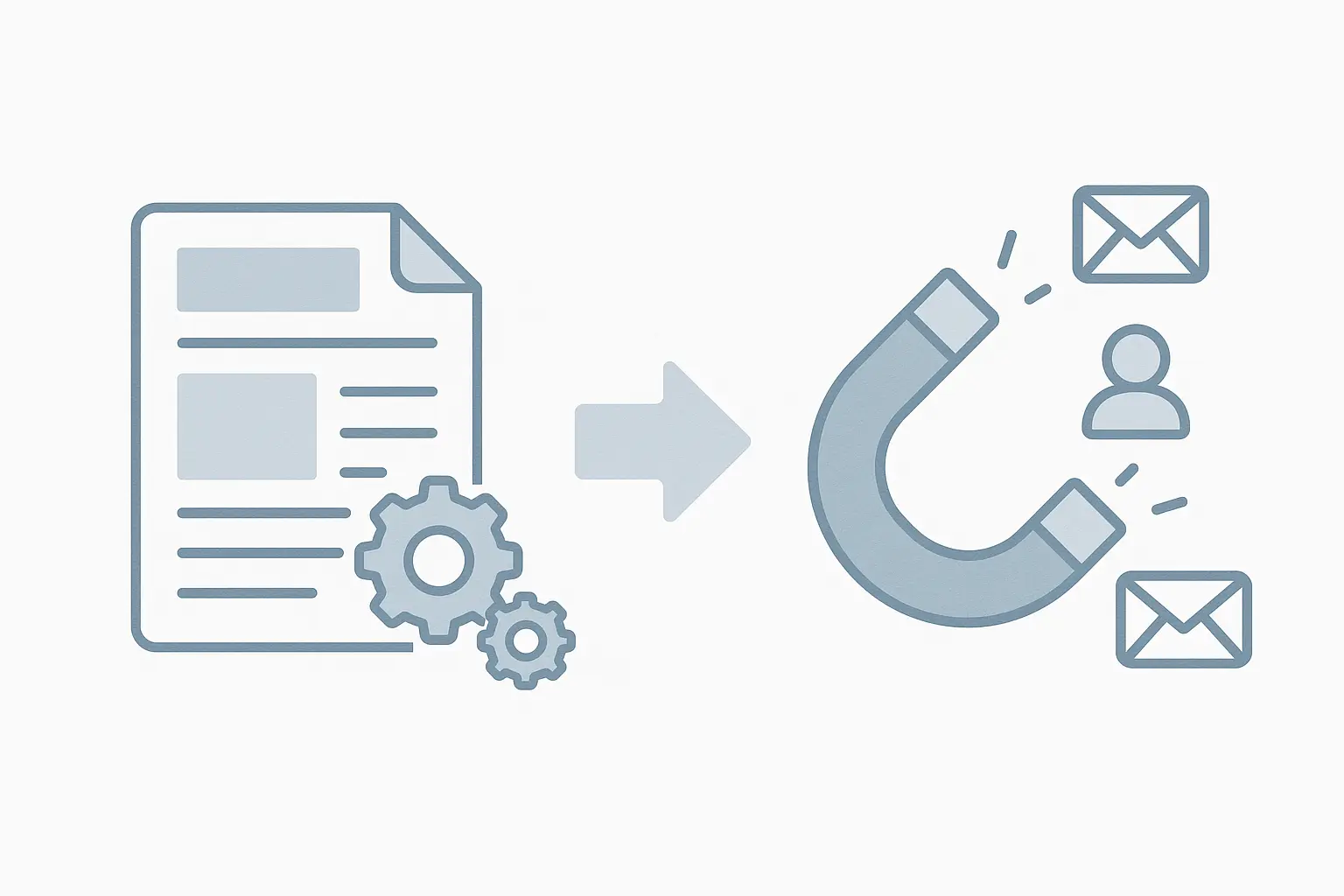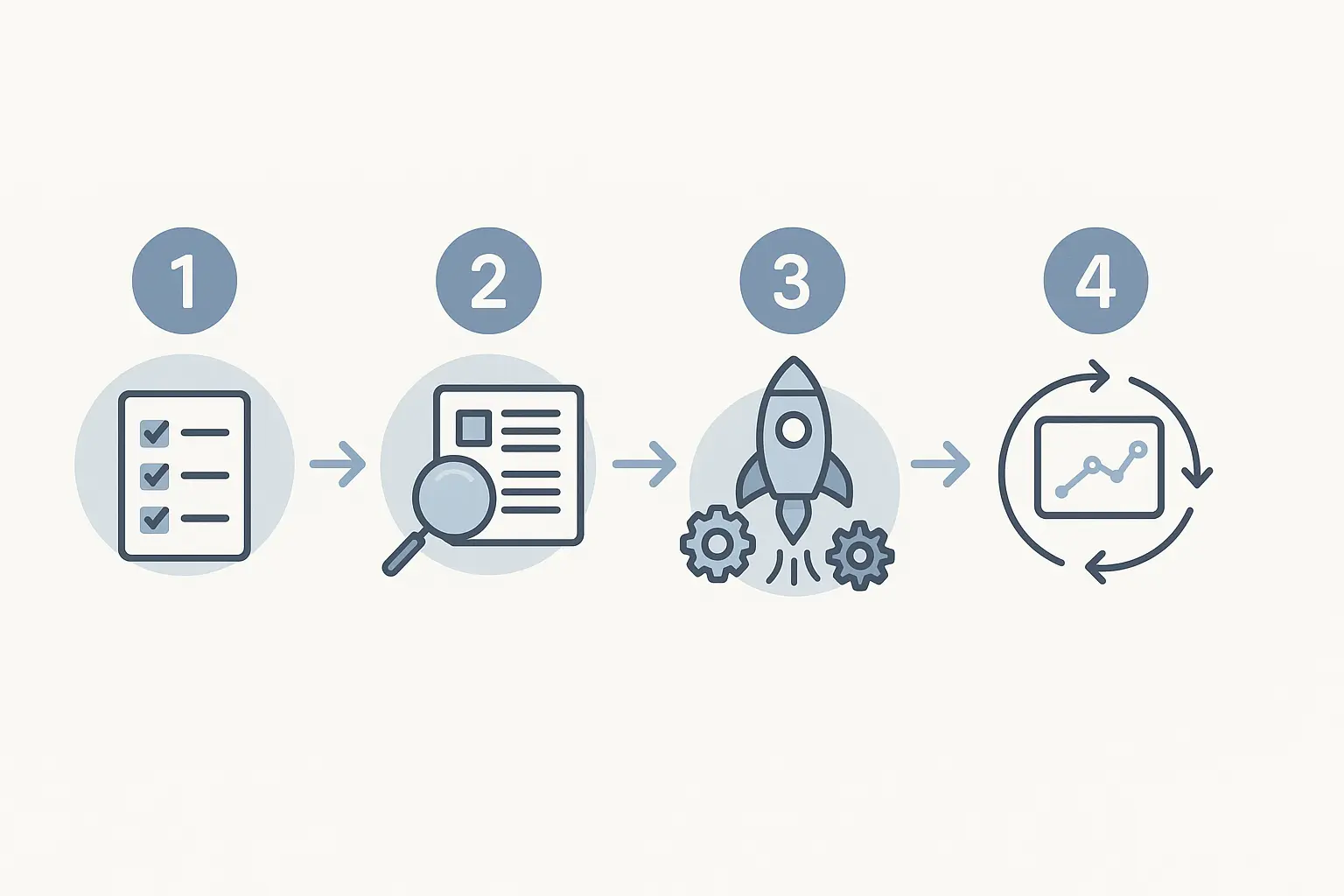Does this sound familiar? Your agency’s blog is filled with dozens, maybe hundreds, of articles. You’ve invested time and money creating them; they get some traffic, a few social shares, and might even rank for a handful of keywords. But when you check your lead reports, the blog is a ghost town. It’s a library where people browse but never check anything out.
You’re not alone. Many agencies pour resources into content creation only to see it become a digital archive. But what if this quarter’s highest-impact content marketing strategy wasn’t creating anything new at all?
What if it was unlocking the hidden potential in the assets you already own?
This is the power of content retrofitting: the strategic process of transforming your existing, underperforming blog posts into consistent, measurable lead generation engines.
What Is Content Retrofitting (and Why Does It Matter)?
Content retrofitting isn’t just about updating a date or fixing a broken link. It’s a strategic overhaul. It means re-engineering a piece of content with a single, clear goal: to convert a reader into a lead.
Think of it like this: your blog is your digital real estate. Right now, you have properties that attract visitors, but they have no front door to your business. Retrofitting is the renovation that builds that entryway.
This strategy matters more than ever. An eye-opening Ahrefs study found that a staggering 90.63% of content gets zero traffic from Google. And for the small fraction that does get traffic, most of those visitors are never captured. You’re pouring water into a leaky bucket. Retrofitting plugs the leaks by giving your existing traffic a clear, valuable next step.
It’s about shifting from a “more is better” content mill to a “smarter is better” asset management mindset.
The Goldmine Hiding in Your Analytics: Identifying Retrofit Candidates
Your first step isn’t to pick posts at random. It’s to become a data detective. You’re looking for the sweet spot: content with unrealized potential. That means finding posts with two key traits:
-
Consistent Traffic: These are posts that Google already likes. They get a steady stream of visitors each month. You can find these in Google Analytics (look for pages with high Sessions or Users) or Google Search Console (look for high Impressions and Clicks).
-
Low or Zero Conversions: These visitors arrive, read, and leave. There’s a clear disconnect between the information they want and the action you want them to take.
These are your prime candidates. They have a built-in audience; you just need to give that audience a reason to engage further. Look for “problem-aware” content—articles that explain a challenge or answer a “how-to” question. A visitor reading about “common website SEO mistakes” is already qualified; they already know they have a problem and are actively seeking a solution.
The Retrofitting Playbook: 4 Steps to Transform Posts into Lead Magnets
Once you’ve identified your target posts, it’s time for the renovation. This systematic approach ensures you’re not just adding a button, but fundamentally changing the post’s purpose.
Step 1: Align the Offer with User Intent
This is the most critical step. A generic “Contact Us” call-to-action (CTA) at the bottom of a blog post is the digital equivalent of a cold call. It doesn’t work because it ignores why the reader is there. They came for information, not a sales pitch.
The solution is a Content Upgrade: a highly relevant, value-added resource that complements the blog post.
For example:
Blog Post: “10 On-Page SEO Factors You Can’t Ignore”
Bad CTA: “Contact Us for SEO Services”
Great Content Upgrade: “Download Our Free 25-Point On-Page SEO Checklist”

The data backs this up. HubSpot found that targeted, relevant CTAs convert 202% better than generic ones. Your offer must feel like the natural next step in the reader’s learning journey, not a jarring interruption.
Step 2: Inject Conversion Elements Seamlessly
Don’t just slap your new offer at the end of the post and call it a day. Weave it into the fabric of the article.
-
Inline Text CTAs: Within the body of the article, link directly to your content upgrade’s landing page. For example: “While optimizing your title tag is crucial, it’s just one part of the puzzle. Download our complete on-page SEO checklist to ensure you cover all your bases.”
-
Feature Boxes: Use a visually distinct box within or at the end of the post to highlight the offer. Make it stand out with a different background color and clear, benefit-driven copy.
-
Exit-Intent Pop-ups: For visitors about to leave the page, a non-intrusive pop-up offering the content upgrade can be a powerful way to capture their information before they disappear forever.
The goal is to provide multiple, frictionless opportunities for the reader to convert. Automation can even analyze on-page engagement to pinpoint the best places for these elements—a key part of leveraging AI in SEO to improve performance.
Step 3: Refresh and Repromote for a Second Wind
Now that you’ve added the conversion mechanics, you need to signal to both users and search engines that this content is fresh and more valuable than before.
-
Refresh: Update any outdated statistics or information. Add new examples or insights. Improve the formatting for readability. Check for and fix broken links.
-
Repromote: This is key. Don’t let your newly retrofitted post sit there. Share it across your social media channels, feature it in your email newsletter, and build new internal links to it from other relevant pages on your site.
This refresh-and-repromote cycle sends strong positive signals to Google. According to a study by Orbit Media, bloggers who update old posts are 2.6 times more likely to report “strong results.”
Step 4: Measure What Matters
The only way to know if your retrofitting efforts are working is to track the right metrics. Move beyond vanity metrics like page views and focus on what drives business growth.
-
Conversion Rate: What percentage of visitors to the post are downloading your content upgrade?
-
Leads Generated: How many new, named contacts did this specific post generate this month?
-
Lead-to-Customer Rate: (This is the ultimate goal) Of the leads generated from this post, how many eventually became clients?
Connecting content performance directly to revenue is how you prove ROI and justify further investment in your content strategy.

Common Pitfalls to Avoid in Content Retrofitting
As powerful as it is, retrofitting can go wrong. Watch out for these common mistakes:
-
Offer Mismatch: Forcing a bottom-of-funnel offer (like “Request a Demo”) onto a top-of-funnel educational post. Always match the offer to the reader’s intent.
-
Creating Too Much Friction: Asking for ten form fields in exchange for a simple checklist. Keep your forms lean—name and email are often all you need at this stage.
-
The “Set It and Forget It” Mindset: Your first offer might not be a home run. Continuously monitor performance and be prepared to test different CTAs, headlines, and lead magnets.
Frequently Asked Questions (FAQ)
Q1: How often should I retrofit my content?
A1: Content retrofitting should be an ongoing process, not a one-time project. A good practice is to dedicate time each quarter to review your analytics and identify a new batch of 5-10 posts to retrofit.
Q2: Can I retrofit content that has very little traffic?
A2: It’s possible, but the ROI is lower. Prioritize posts that already have a proven audience. For low-traffic posts, your efforts might be better spent on SEO and promotion first to build an audience before you try to convert it.
Q3: What’s the difference between updating a post and retrofitting it?
A3: Updating is about maintaining accuracy and freshness (e.g., changing a year in the title, updating a statistic). Retrofitting is a strategic conversion overhaul focused on adding a lead generation mechanism and aligning the entire post around that goal.
Q4: Do I need special tools for this?
A4: Not necessarily. Google Analytics and Google Search Console are all you need to identify candidates. For creating CTAs and landing pages, most marketing automation platforms (like HubSpot, Mailchimp, etc.) or even simple WordPress plugins will do the job.
From Content Graveyard to Lead Generation Engine
Your existing content is one of your agency’s most valuable—and most overlooked—assets. By systematically identifying high-potential posts and retrofitting them with relevant, value-driven offers, you can turn your blog from a passive information hub into an active lead generation machine.
This process lets you work smarter, maximizing the return on your previous investments and building a scalable system for growth. It’s a core part of learning how to scale an SEO agency effectively because it creates a predictable source of inbound interest without the constant pressure to create new content. For agencies looking to expand, applying these principles for your own clients is a powerful value-add. The execution can even be managed by leveraging white-label SEO services for agencies, freeing you up to focus on strategy.
Start today. Dive into your analytics, find your first candidate, and turn that forgotten post into your next great source of leads.


